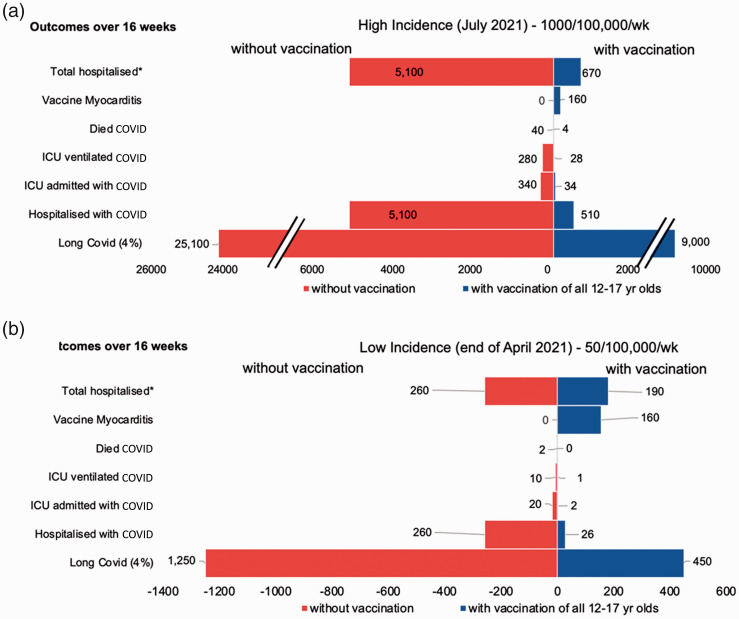Figure 2.
Risk–benefit of COVID-19 vaccination in adolescents at high and low incidence levels. (a and b) A comparison of specific outcomes among adolescents aged 12–17 years of age calculated over a 16-week period assuming different levels of exposure with high incidence of 1000 per 100,000 per week (reflecting the current case rates in this age group in England) and low incidence of 50 per 100,000 per week, corresponding to end of April 2021. Note: the scales for (a) and (b) are different for ease of visualisation. In all cases, direct benefits of vaccination appear to considerably outweigh risks. Values above 50 have been rounded to the closest 10. Myocarditis here refers to both vaccine-related myocarditis and pericarditis. We show long COVID estimates assuming an incidence rate of 4% – see results section for equivalent estimates of 2% and 14% incidence. *Note: Total hospitalised considers hospitalisations from COVID-19 and vaccine-related myocarditis/pericarditis (assuming a worst-case scenario that all cases of myocarditis are hospitalised).

